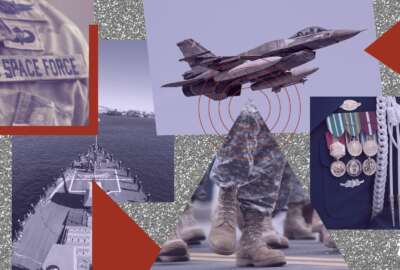Army’s unified communications plans slide to 2016
The service's ambitious plan to replace its legacy communications circuits. with an everything-over-IP infrastructure that can handle voice, video, chat and lots...
One more piece of Army news (and yes, I realize the notebook happens to be tilted heavily toward the Army this week): The service’s ambitious plan to replace its legacy communications circuits with an everything-over-IP infrastructure that can handle voice, video, chat and lots of other collaboration tools looks like it’s going to be delayed.
As recently as November, the Army had planned to issue an industry solicitation that would deliver UC as a service during fiscal year 2015, and make an award in 2016. The Army’s program executive office for enterprise information systems (PEO-EIS) now says it doesn’t plan to even release an RFP until 2016.
Since 2014, the Army has been conducting research into the commercial UC market (where the acronym stands for unified communications, though DoD still insists on calling it “unified capabilities”), including through two requests for information and an industry day.
“What we got from that was that we still have a lot of homework to do,” said Jeremy Hiers, the PEO-EIS project director for enterprise services. “The questions include whether we want one vendor to do all the capabilities or whether we want a mix of vendors and how we balance declining budgets and make tradeoff decisions in what we want to buy. But probably one of the most challenging is what it means to buy UC as a service. Is it something the Army’s going to build and we’ll find from another service provider within the government, or are we going to go and buy a turnkey-type solution from industry?”
But the Army doesn’t want anyone to get the idea that UC is on the back burner. It still featured prominently as a top priority in the updated IT campaign plan the Army issued last week.
That’s because the service sees UC not just as a way to improve collaboration and get rid of a lot of legacy (and costly) point-to-point phone circuits, but as the next logical step in a culture change that started with the Army’s decision to take on email as an enterprise- wide initiative, instead of letting each military post do their own thing.
“It’s our next major hurdle after consolidating data centers and moving apps to the cloud,” said Robert Ferrell, the Army’s chief information officer.
RELATED STORIES:
Army changing its energy culture through better data
On DoD: Building more resilient soldiers, families and Army civilians
Bigger posts absorb cuts as Army downsizes
Copyright © 2025 Federal News Network. All rights reserved. This website is not intended for users located within the European Economic Area.
Jared Serbu is deputy editor of Federal News Network and reports on the Defense Department’s contracting, legislative, workforce and IT issues.
Follow @jserbuWFED






